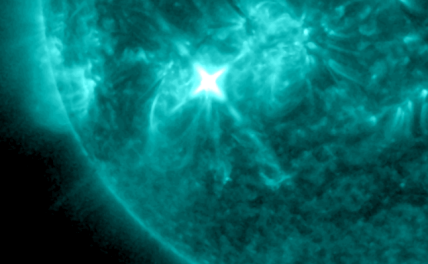Not only is a holiday approaching: a solar flare could trigger a magnetic storm.
Our planet is currently experiencing a magnetic storm, and it is unlikely to subside anytime soon, as new coronal mass ejections (CMEs) have erupted from the Sun following a significant solar flare.
Over the next 48 hours, two CMEs are expected to impact Earth — a minor sharp hit is anticipated on December 24, followed by a more direct strike on December 25. These events may lead to geomagnetic storms classified as G1-G2, which are considered minor to moderate, as reported by scientists on the space weather research site Spaceweather.
They explain that the large solar sunspot 3932 erupted on December 23, producing an M8.9 class solar flare. A satellite from the National Oceanic and Atmospheric Administration (NOAA) detected an extreme ultraviolet flare:

"The flare caused a brief high-frequency radio blackout over Africa and the South Atlantic. Of greater interest is the coronal mass ejection (CME). SOHO coronagraphs observed a fast CME emerging from the explosion site. The bulk of the CME will pass by Earth; however, there is still a significant component directed towards our planet,” the scientists explained.
This CME, according to NOAA models and the National Aeronautics and Space Administration (NASA), is expected to reach Earth on December 25, triggering a geomagnetic storm classified as G1-G2.
Previously, "Telegraph" reported that meteorologists shared information about the weather on Christmas Eve in Odessa, Kharkiv, Dnipro, and Lviv.